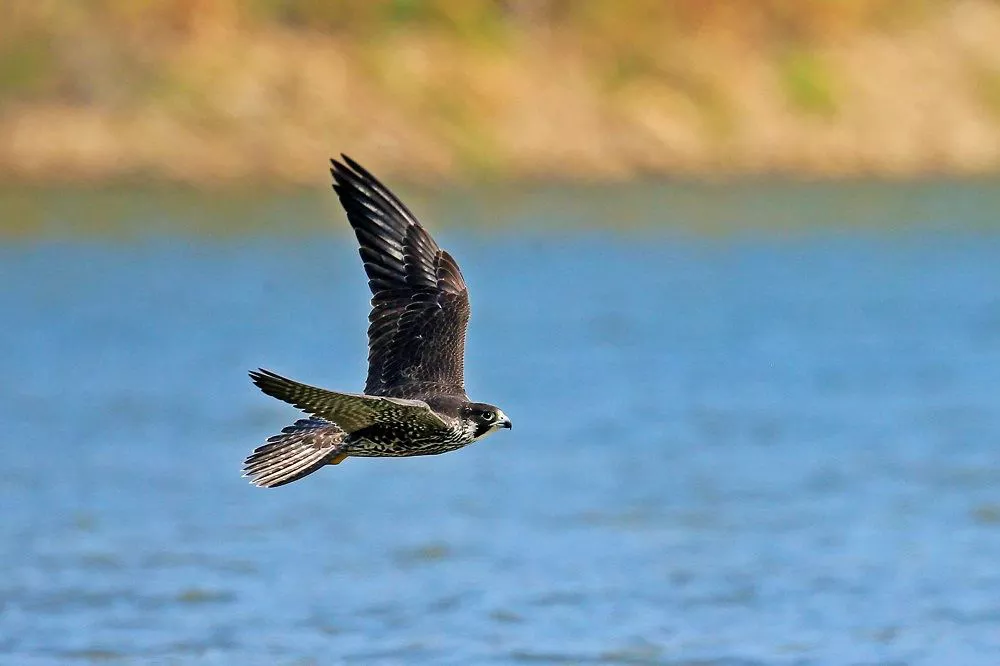The peregrine falcon is a majestic bird of prey that is known for its incredible speed and hunting abilities. These birds are known to be one of the fastest animals on the planet, capable of reaching speeds of up to 240 miles per hour when they are diving to catch their prey. In this article, we will take a closer look at what the peregrine falcon looks like and the unique characteristics that make it such a fascinating bird.
Size and Physical Structure:
The peregrine falcon is a medium-sized bird, measuring around 15-20 inches in length and weighing between 1.5-3.5 pounds. The males are slightly smaller than the females, but both sexes have similar coloration and markings. These birds have a broad, powerful chest and long, pointed wings that enable them to fly at high speeds and maneuver quickly. The wingspan of a peregrine falcon can range from 3-4 feet, making them capable of covering a large distance in a single glide.
Plumage and Coloration:
The peregrine falcon exhibits a striking coloration that contributes to its allure. Its upperparts, including the back, wings, and tail, are predominantly slate gray to bluish-gray, with black barring or mottling. The undersides, including the chest, belly, and thighs, are white or off-white, often with fine dark streaking.
Facial Features:
The peregrine falcon possesses distinct facial features that aid in identification. Its head is relatively large and round, with a prominent hooked beak, characteristic of birds of prey. The beak is dark in color, with a sharp, curved tip for tearing into prey. The peregrine falcon’s eyes are large, dark, and set forward on the sides of its head, providing exceptional binocular vision.
Markings and Patterns:
One of the defining characteristics of the peregrine falcon is its unique patterning. The crown and nape of its head showcase a distinctive black “helmet” or “cap,” which contrasts with the pale throat and cheeks. A dark “mustache” mark extends downward from each eye, further enhancing its facial features.
Flight Feathers and Tail:
The wings of the peregrine falcon are long and pointed, enabling remarkable flight speeds during hunting dives. When in flight, the falcon’s wings reveal their intricate pattern of dark primary feathers and lighter secondary feathers. The tail is relatively long and tapered, with dark bands across its width. In full flight, the tail feathers help maintain stability and maneuverability.
Sexual Dimorphism:
Sexual dimorphism is evident in peregrine falcons, with females being larger than males, as mentioned earlier. Additionally, female peregrines often exhibit more extensive blackish barring on their underparts compared to males. These differences are most noticeable during close observations or when individuals are seen side by side.
Behavior
The peregrine falcon is a solitary bird that spends most of its time hunting and defending its territory. These birds are known for their incredible speed and agility, which allows them to catch prey in mid-air. They often hunt smaller birds, such as pigeons, doves, and songbirds, but have also been known to catch larger prey, such as ducks and geese.
Notable Features
One of the most notable features of the peregrine falcon is its incredible speed. It is the fastest bird in the world, capable of reaching speeds of up to 389 km/h (242 mph) during a high-speed dive, or “stoop,” when hunting prey. This impressive speed is due in part to the peregrine falcon’s streamlined body and powerful wings, which enable it to fly with great speed and precision.
Another notable feature of the peregrine falcon is its talons, which are long, sharp, and curved, allowing it to catch and hold onto its prey with great force. The peregrine falcon’s beak is also sharp and curved, allowing it to tear and eat its prey with ease.
Conclusion:
The peregrine falcon’s appearance is a testament to its adaptability and mastery of the skies. With its slate-gray upperparts, white underparts with dark streaking, prominent facial features, and unique patterns, this raptor exudes elegance and power. Recognizing and appreciating these remarkable physical attributes can deepen our understanding and admiration for one of nature’s most awe-inspiring creatures—the peregrine falcon.
Related topics:


 Facebook
Facebook  Instagram
Instagram  Youtube
Youtube 